How to manage application packages with WingetUI on Windows 11
Winget is a command line tool that can download and install application packages from the MS Store and the applications available in its repository. Windows users had been yearning for a dedicated package manager built into the operating system until Microsoft decided to give them a package manager. This option is better than using an additional package manager but not all users love the terminal.
If you've used Winget even once, you'll know that knowing the correct commands is extremely important if you want to avoid making mistakes. But what if you have a GUI version of Winget? WingetUI is one of the applications that put on a user interface layer on Winget. Let's find out more details through the article below!
How to download and install WingetUI on Windows11
WingetUI is available on GitHub and also has a dedicated website to keep you updated on new features. However, you will only find download links on GitHub, Softpedia, and Uptodown. Download the installer file from any of these servers and then install it on your PC. Please note that WingetUI only works with Windows 10 and Windows 11 (64-bit version only).
Once the installation is complete, the application will ask you to select the package managers you want to use. Select the Enable Winget now option and click the Apply and Start WingetUI button .
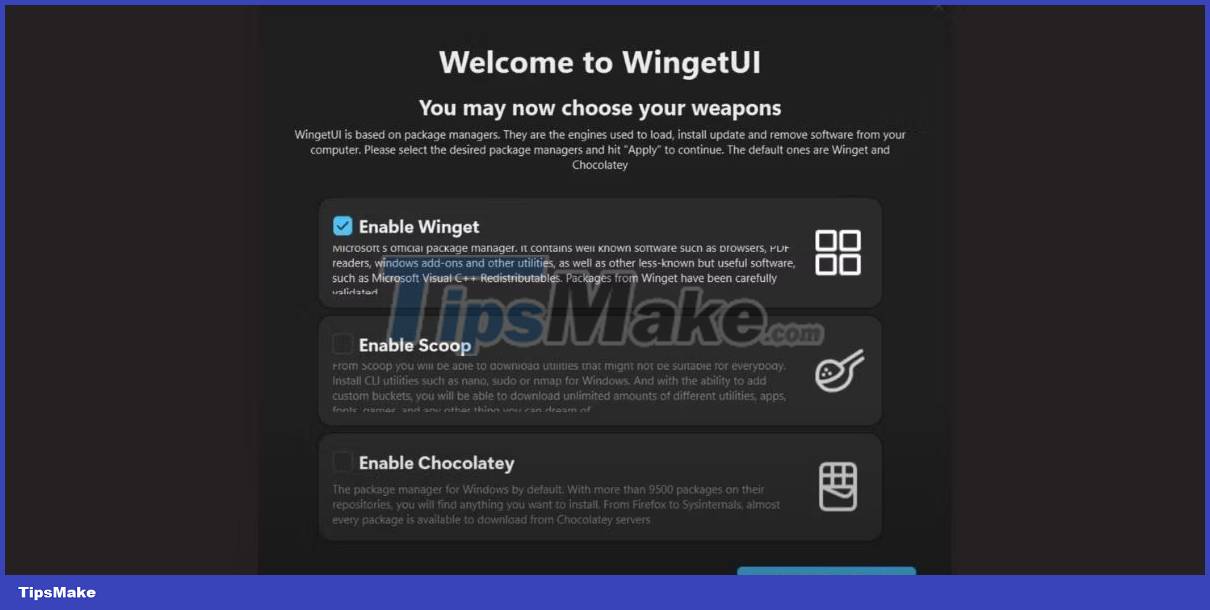
How to manage application packages with WingetUI on Windows 11
WingetUI divides the entire application into three parts: Discover Packages, Software Updates and Installed packages . You can view all the packages available in the app using the Discover Packages section , while the Software Updates section lists all the apps that have new versions available. Finally, the Installed Packages section allows you to manage application packages on your PC.
Here's what you can do using WingetUI:
1. Browse the list
To browse the list of apps, click the Discover Packages button at the top. WingetUI will list all packages available with source Winget. You will also see a counter showing the total number of apps listed in the repository.
Click on the search bar and enter the name of the application package that you want to install on your PC. It will list all available versions of the apk along with its version and bundle ID.
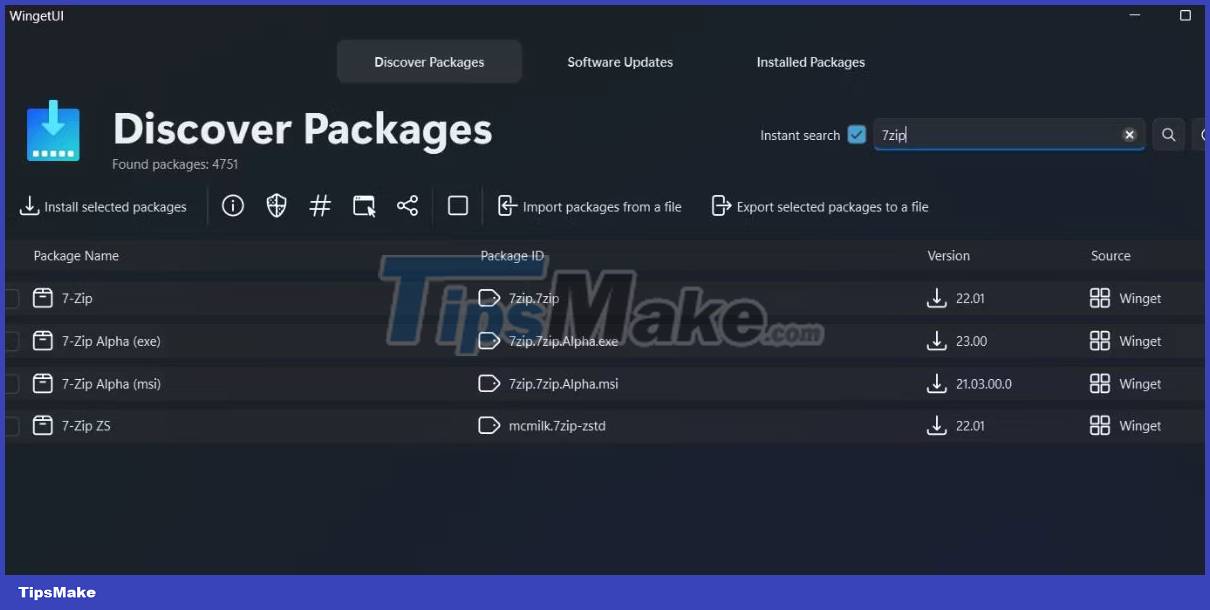
2. Install the package
To install the package, you will have to use the Discover Package tab :
1. After searching and locating the package, click on it to select it.
2. Then right click on it to open the context menu. Before starting the installation, you must configure the installation.
3. Select the Package details option from the context menu.
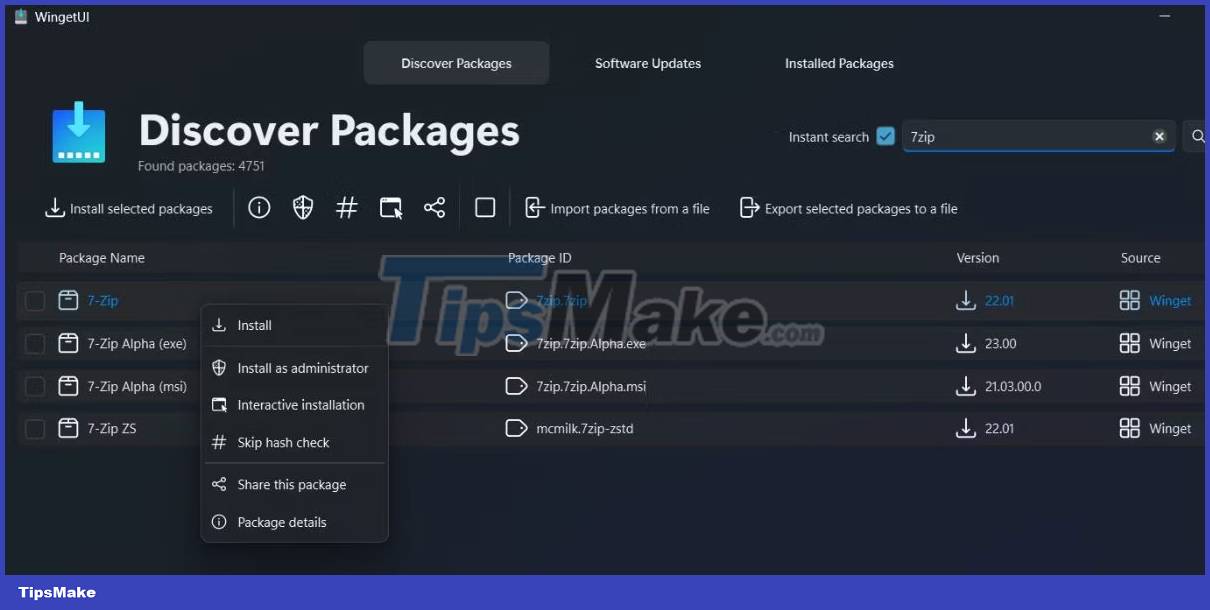
4. Check the source of the package. Also, check out the image gallery to get an idea of the app's user interface.
5. Scroll down to Installation options . Uncheck Skip hash check and Interactive installation . If you enable interactive installation, you will have to do the installation manually, which may take longer.
6. Some applications cannot be installed on your PC without admin rights. So check the Run as admin checkbox .
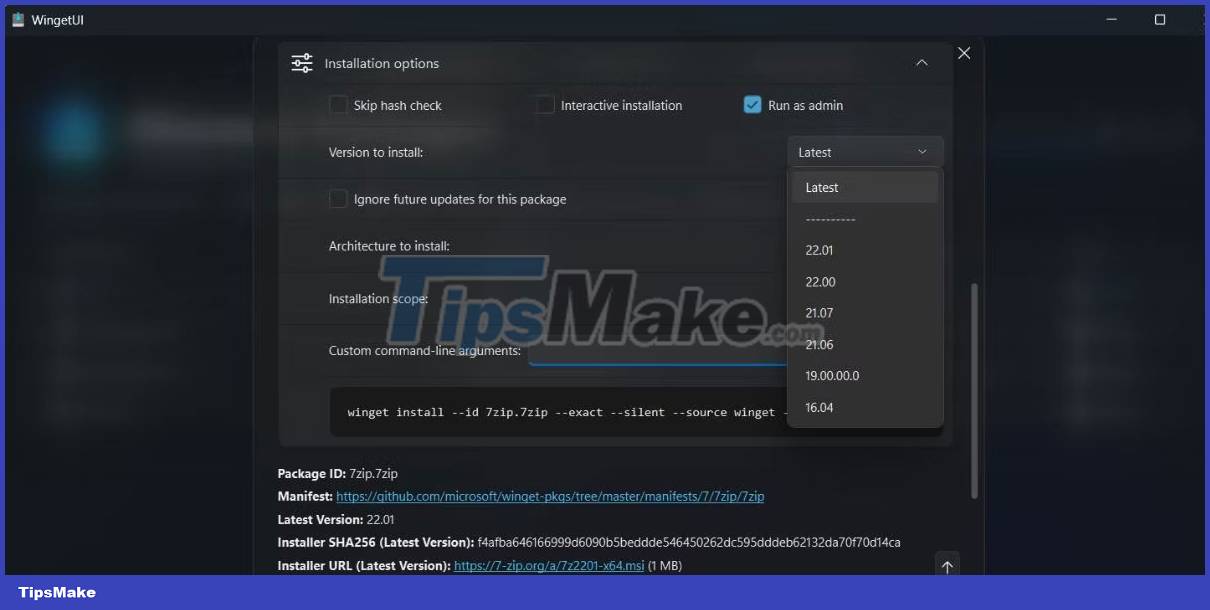
7. You can also select a specific version of the application you are trying to install. Expand the Version to install drop-down list . You can choose any version from here. Leave the option Ignore future updates for this package intact .
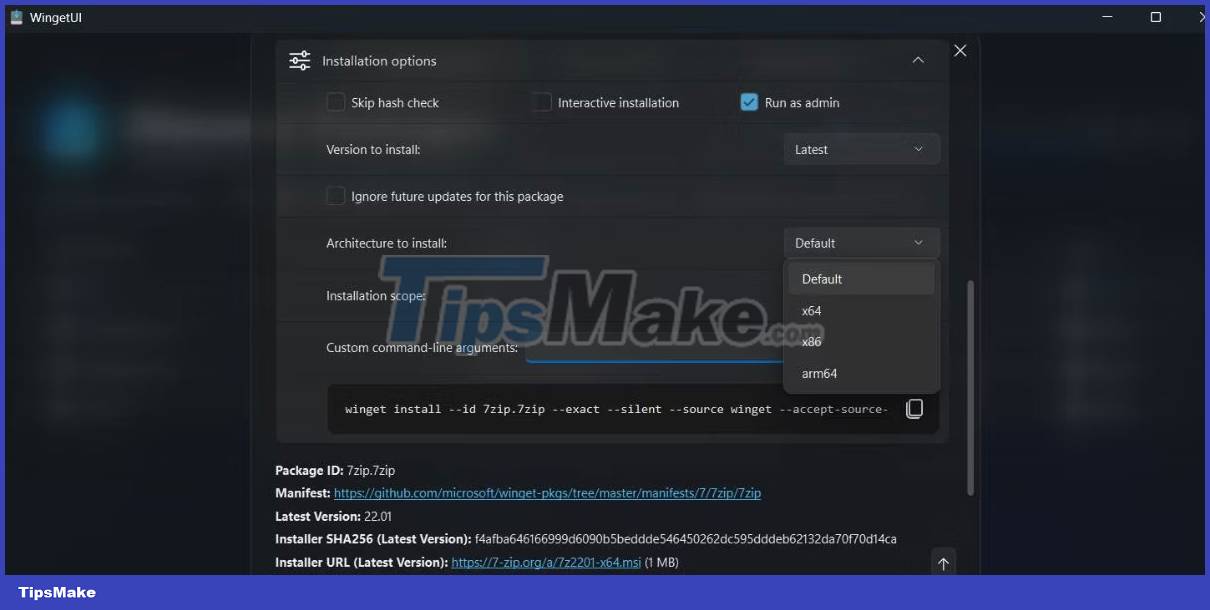
8. Next, you can choose the package architecture: x64, x86 or arm65, depending on your CPU architecture and operating system.
9. Finally, select Scope for package installation. If you want to install on the whole machine, select the local machine option . Or select Current user if you only want to install the application for one user profile.
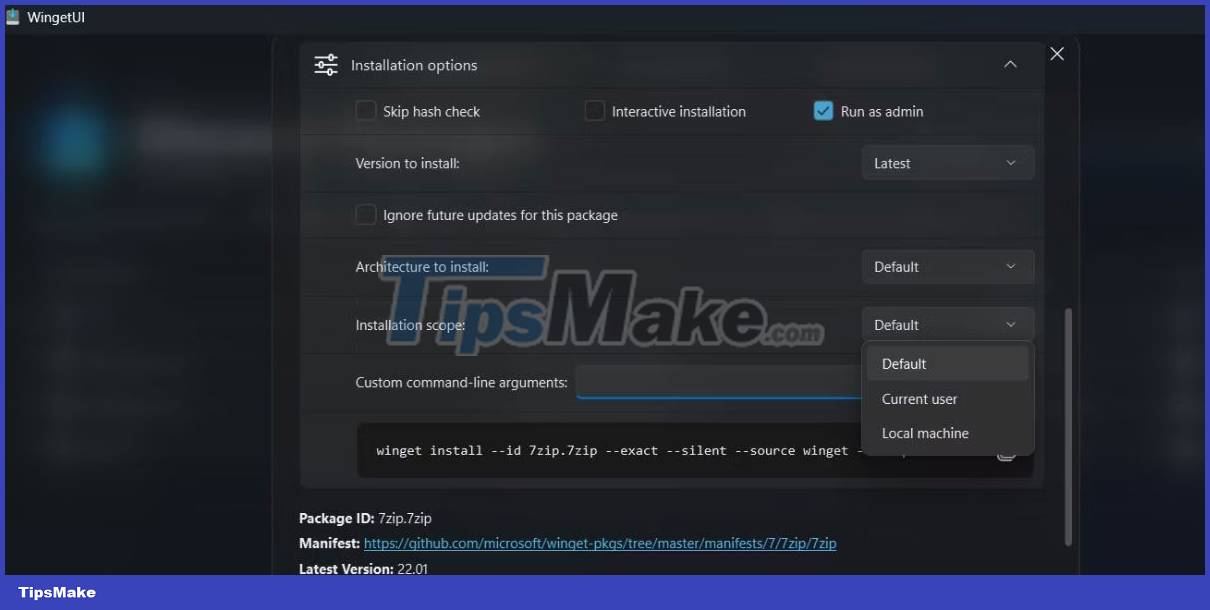
10. Click the Install button . UAC will appear. Click the Yes button .
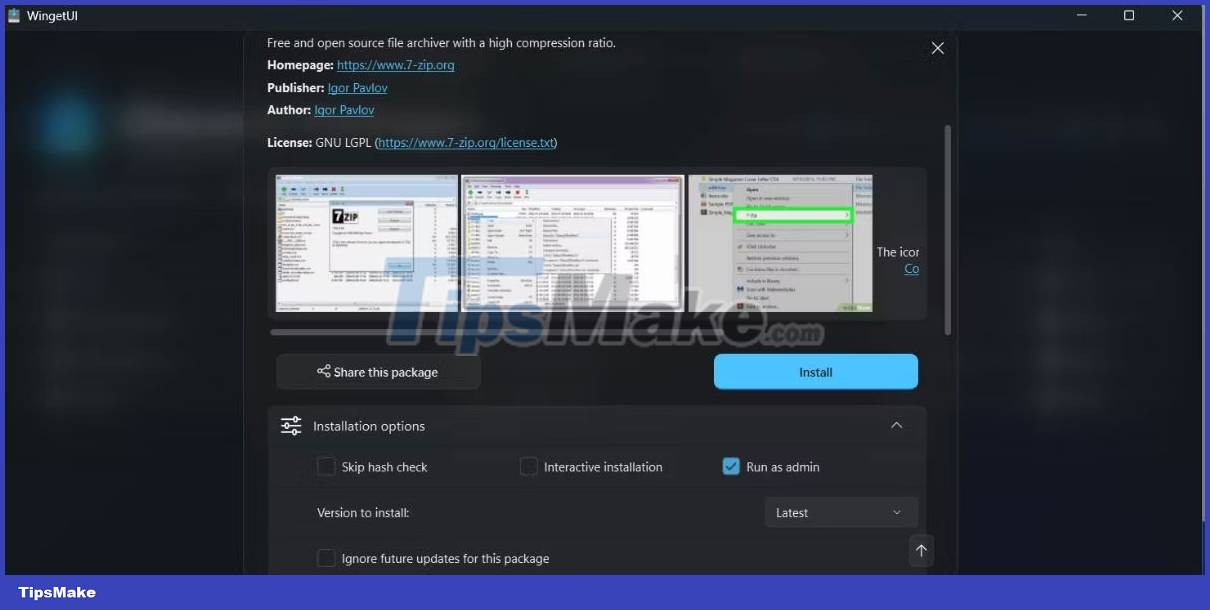
You will see the installation status at the button of the WingetUI window. Windows will notify you when the installation is complete.
3. Uninstall the package
Follow these steps to uninstall a package using WingetUI:
1. Switch to the Installed Packages tab . Right click on the package you want to uninstall.
2. Select the Uninstall as administrator option .
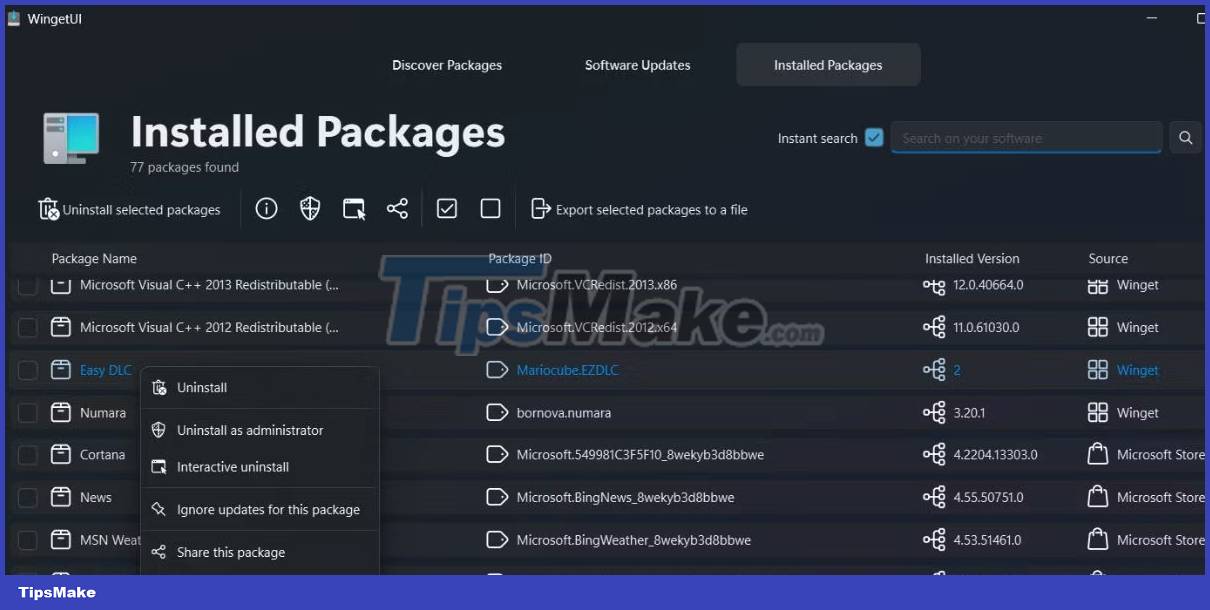
3. UAC will appear. Click the Yes button .
4. WingetUI will remove the installed package.
4. Install or uninstall packages in bulk
Bulk installation and uninstallation is easy with WingetUI. Here's how to do it:
1. Select each package you want to install separately.
2. Then click the Install the selected packages button at the top.
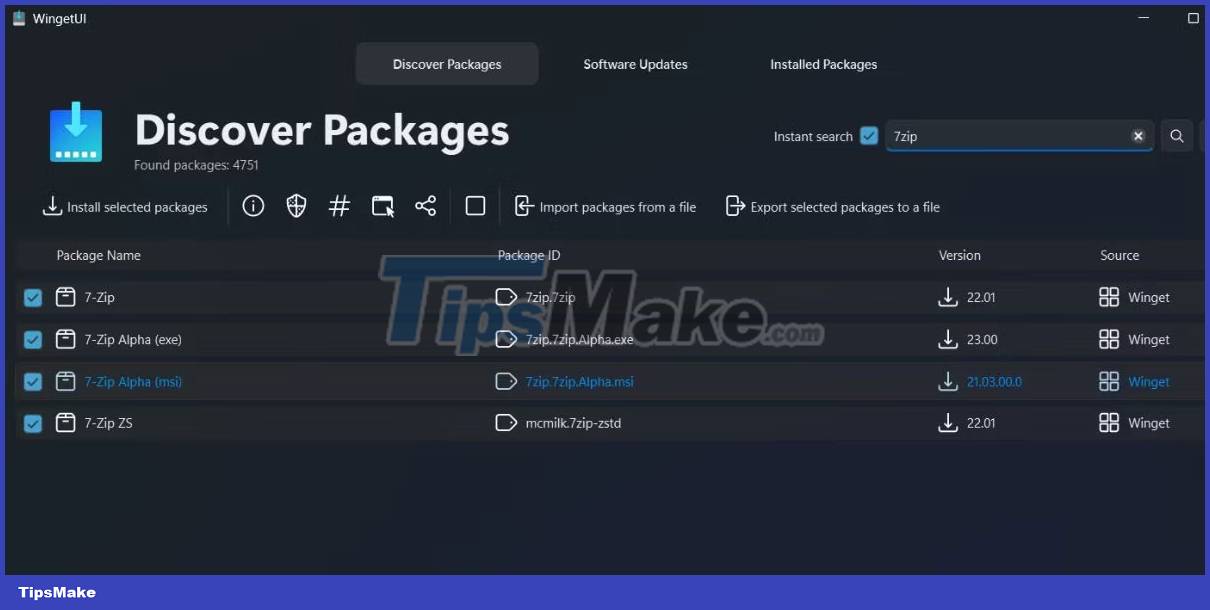
3. WingetUI will install these apps one by one.
To bulk uninstall packages, follow these steps:
- Switch to the Installed Packages tab . Then, click and select all the packages you want to remove from your PC.
- Click the Uninstall selected packages button to remove the selected packages individually.
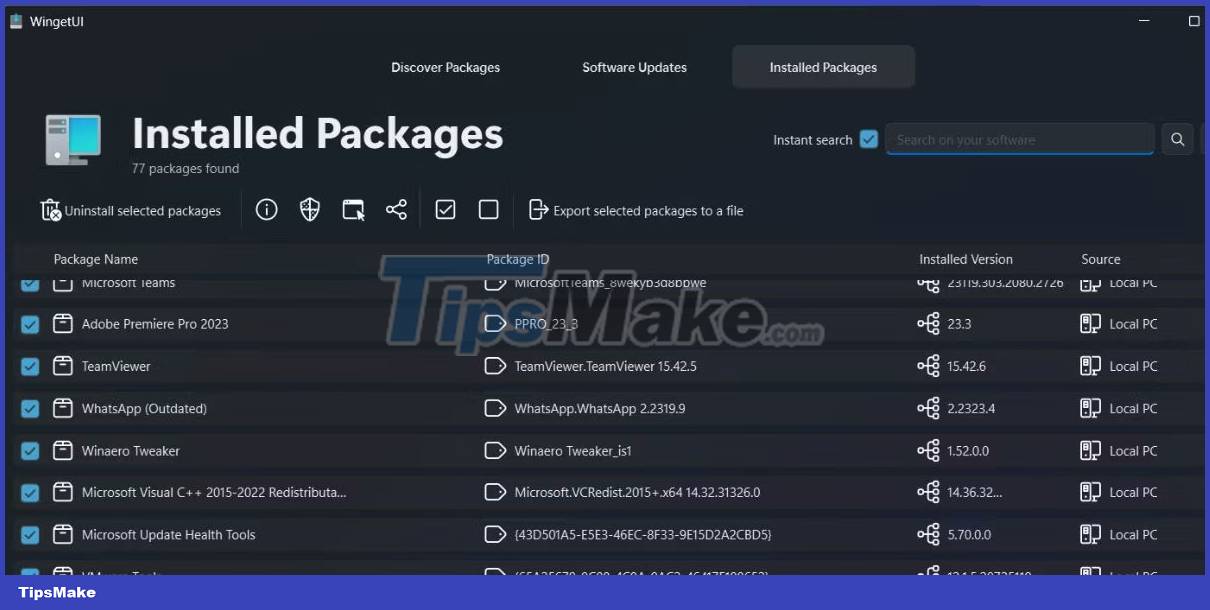
5. Export/Import package list
You can create custom package export lists and store them in a JSON or Txt file. Here's how to do it:
1. First, select all the packages you want to export from the Discover Packages section or the Installed Packages section .
2. Then click the Export selected packages to a file option .
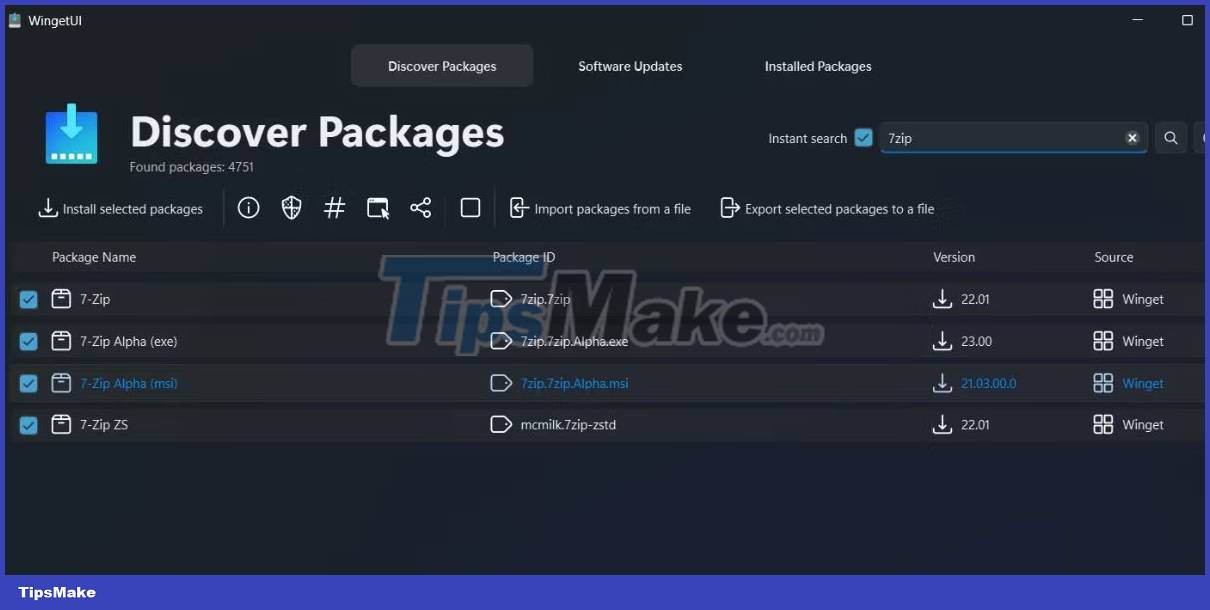
3. Enter a name for the output file and save it to any location on your PC.
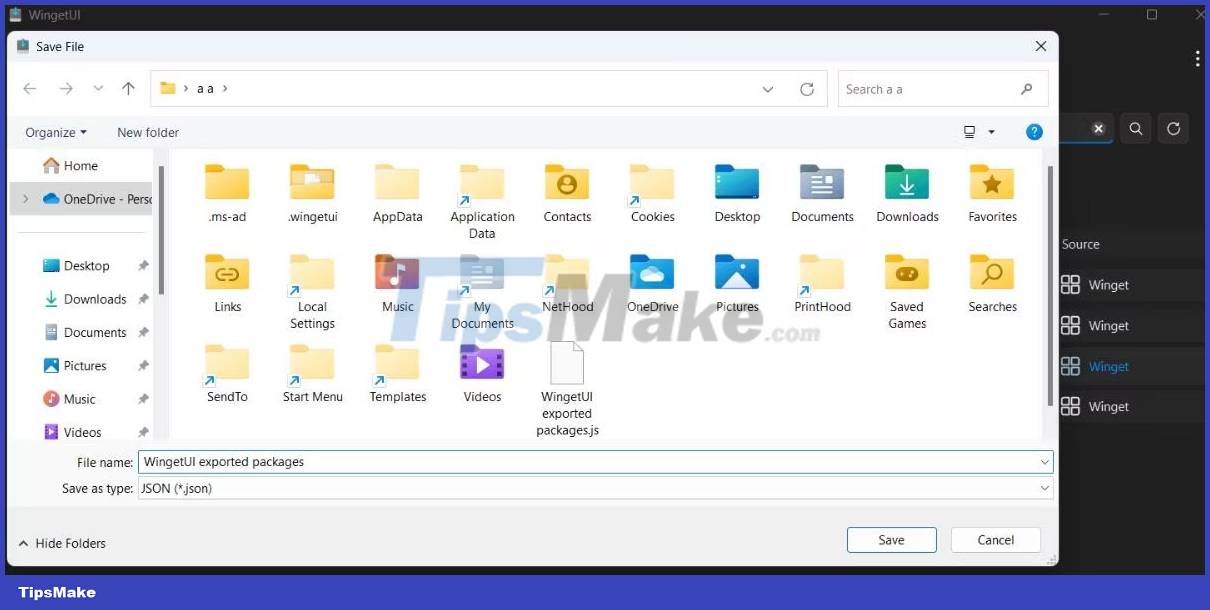
4. You can later import this file to another PC or even your own PC using Winget or Winget UI.
Follow these steps to import Winget JSON file in WingetUI:
1. Switch to Discover Packages in the app.
2. Click the Import packages from a file option .
3. Browse your PC for the Winget import file and select it. Click the Open button .
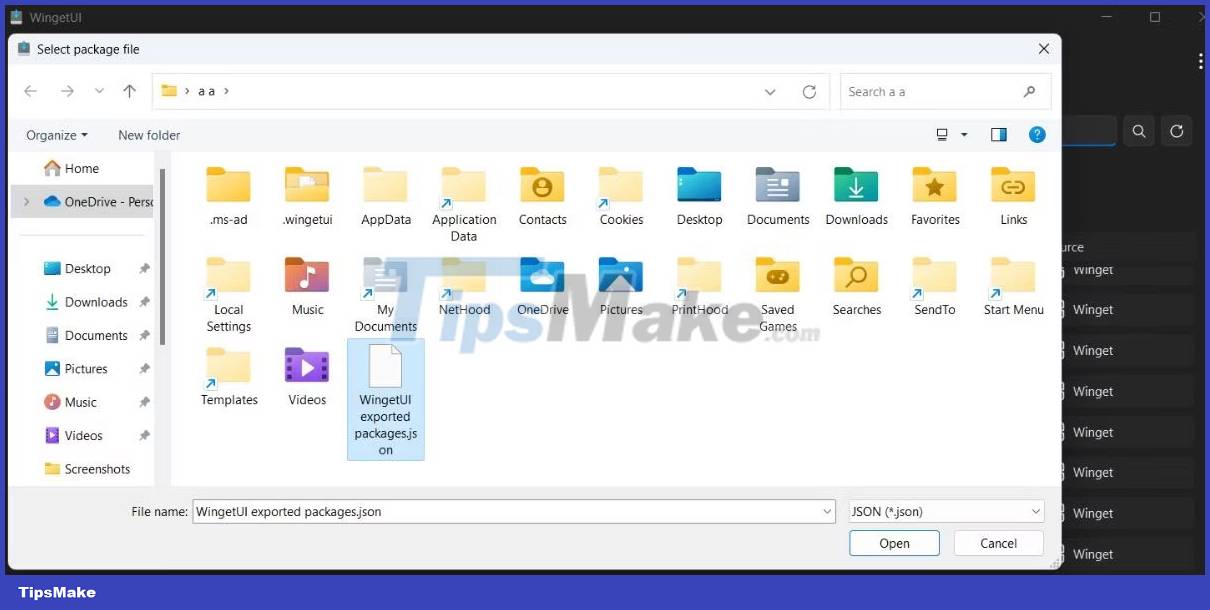
WingetUI will automatically start installing all the packages listed in the import file.
6. Check for software updates
Switch to the Software Updates section . WingetUI will list all packages available for updates. To update an application, right-click on it and select the option Update as administrator .
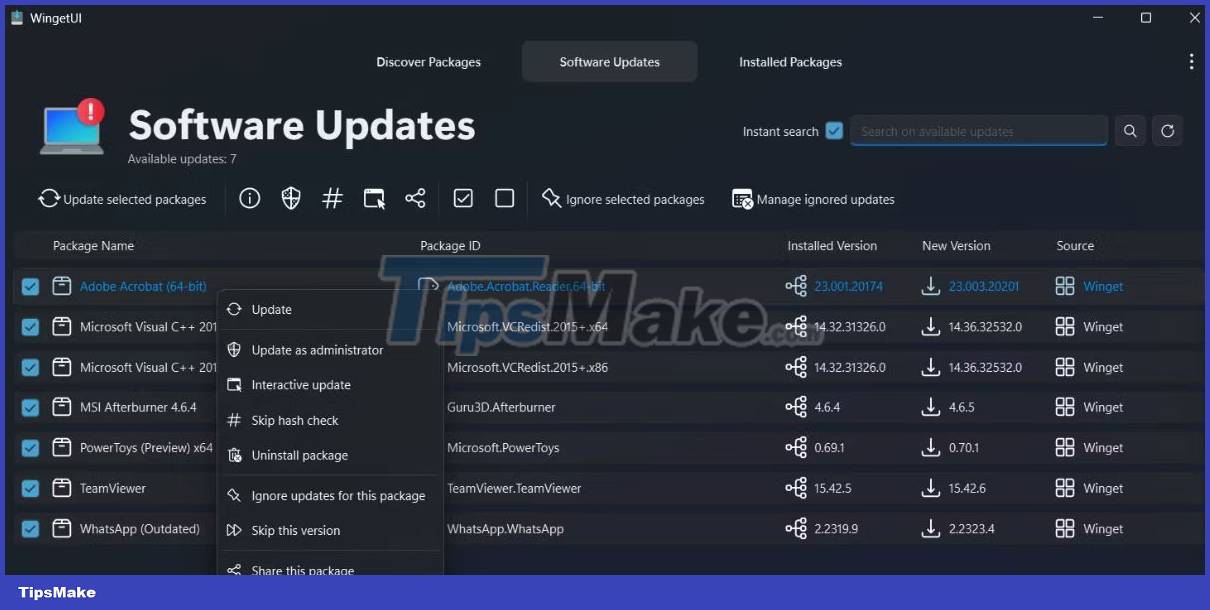
If you want to update all packages at once, click the checkmark icon to select all packages. Then click the Update selected packages button .

You should read it
- Decode how the package manager works and software installation on Linux
- Chocolatey or Windows Package Manager is the better tool to download Windows software?
- 9 most popular Linux package managers today
- What is a package dependency in Linux?
- Instructions for registering V90 package is only 90k to receive the super 3-in-1 integration right away
- How to Convert Package Files in Ubuntu Using Alien
- You will get 2 more years of updates on Windows 7 if you buy a new update package of this operating system version
- How to fix the 'Problem With This Windows Installer Package' error
May be interested
- How to use Calendo to create an appointment on Windows 10
 calendo application will help you to make appointments and manage daily scheduled tasks.
calendo application will help you to make appointments and manage daily scheduled tasks. - Netflix increases the price of all subscription packages from 13 to 18%
 online tv service netflix has decided to raise prices by 13 to 18% for all of its subscription packages.
online tv service netflix has decided to raise prices by 13 to 18% for all of its subscription packages. - Instructions for installing software and applications on Linux
 installing software on linux will be a little different from installing software on windows or macos. instead of accessing the website, users will have to get the application from the linux distribution's software store through the program. to manage library packages, the article below tipsmake will guide you how to install software and applications on linux.
installing software on linux will be a little different from installing software on windows or macos. instead of accessing the website, users will have to get the application from the linux distribution's software store through the program. to manage library packages, the article below tipsmake will guide you how to install software and applications on linux. - How to Install Python Packages on Windows 7
 you want to use python on a windows 7 machine but you don't know what you're doing. what you do know is that in order to go anywhere and do anything you've got to install packages. or maybe you don't even know that yet. take a look at the...
you want to use python on a windows 7 machine but you don't know what you're doing. what you do know is that in order to go anywhere and do anything you've got to install packages. or maybe you don't even know that yet. take a look at the... - How to use EarTrumpet to manage audio on Windows 10
 the eartrumpet application on windows 10 has the ability to manage and control the sound of the computer system, applications or any programs running on the computer.
the eartrumpet application on windows 10 has the ability to manage and control the sound of the computer system, applications or any programs running on the computer. - How to use My Files-X Free to manage Windows 10 files
 the my files-x free app manages files on windows 10 in tab mode with an easy to use interface.
the my files-x free app manages files on windows 10 in tab mode with an easy to use interface. - Run the Windows application on Android with Wine
 developers have just released version 3.0 for linux-based systems, packaged into apk packages and installed on android easily.
developers have just released version 3.0 for linux-based systems, packaged into apk packages and installed on android easily. - How to manage files in tab format on Windows 10
 my computer application on windows 10 will manage folders, files in the same form as the sets feature.
my computer application on windows 10 will manage folders, files in the same form as the sets feature. - 9 most popular Linux package managers today
 the common point between all linux distributions is that they need to be able to install new software packages into the system. various package managers are available, allowing users to install, manage and delete packages easily and quickly.
the common point between all linux distributions is that they need to be able to install new software packages into the system. various package managers are available, allowing users to install, manage and delete packages easily and quickly. - How to Install Software in Debian Linux
 this wikihow teaches you how to use tools built into debian linux to install software packages. if you're using the desktop version of debian, you can use synaptic to install application packages with a point-and-click graphical interface....
this wikihow teaches you how to use tools built into debian linux to install software packages. if you're using the desktop version of debian, you can use synaptic to install application packages with a point-and-click graphical interface....










 How to run Windows 11 on an old PC with Windows To Go and Rufus
How to run Windows 11 on an old PC with Windows To Go and Rufus 11 ways to open System Restore on Windows 11
11 ways to open System Restore on Windows 11 Fix unable to uninstall Epic Games Launcher on Windows 11
Fix unable to uninstall Epic Games Launcher on Windows 11 How to use Samsung DeX to control Galaxy phones on Windows 11
How to use Samsung DeX to control Galaxy phones on Windows 11 What is Dev Home for Windows 11?
What is Dev Home for Windows 11? Microsoft instructs on how to get new Windows 11 updates faster and earlier
Microsoft instructs on how to get new Windows 11 updates faster and earlier